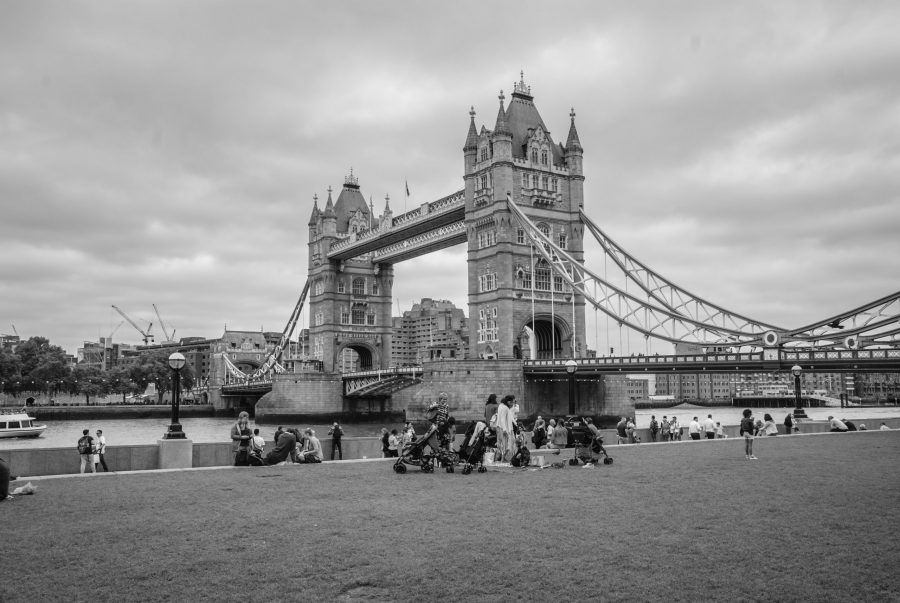Availability and quality of London’s public realm have long been a focus of much debate –and admittedly much collaboration–between the private and public sectors, policymakers and communities. But the current pandemic raised the bar for how we approach our public realm. Streets, squares, parks used to impact our wellbeing, shape our socialising, shopping and commute patterns, notwithstanding the well-known correlation between successful public realm and property values. Now, public space design and management have become vital to our very health, too.
Finding a balance between supporting London’s urban economies and creating lasting social and environmental value by adapting the city’s great public realm is more important than ever.
In this time of unprecedented changes, there are, however, even more powerful forces in play across the entire spectrum of the urban environment and real estate markets. New behaviours of both work and play are likely to put London’s famous resilience to test. Some of these demands on London’s public realm, in particular social distancing, are completely new. But many are accelerated versions of powerful trends that have started to transform both business and built environment landscapes in the UK and globally way before the start of the pandemic: a shift towards fluid workplace, changes in consumer behaviour or the climate change agenda. In our Global Outlook 2030published early in 2020, we discussed these new ways to experience Real Estate in the next decade, but now it is almost like we have to embrace the future much sooner than we ever expected. In these uncertain and challenging times, how can better and more responsive public space help create and sustain lasting social and commercial equity?
“Never let a good crisis go to waste”, said Winston Churchill, and this time we really should not. Rather, all these competing pressures faced by public realm need to be considered to inform innovations in priority uses, engagement strategies and partnership models for better public space in London.
Below we discuss the areas where we think the changes affecting public space will yield tangible and lasting benefits for London and map out the key enablers for this to happen.
The rise of the slow street: reclaiming the city with green commutes
The new urban mobility agenda, aimed at reducing car traffic and making the city more walkable and bikeable, has been an important part of the London Plan and the mayoral transport strategy for a while. Responding to new demands of social distancing and mitigating a dramatic decrease of public transport capacity, the city introduced a bold Streetspace plan, involving creation of a strategic cycling network, widening pavements and further reducing traffic among other measures.
A ten-fold increase in cycling, and up to five-fold increase in walking is anticipated in post-lockdown London
Rather than being a tactical response, many of these changes could well become permanent as increasingly more people prefer active commutes or even just walks in the city. Moreover, if trends of more people working from home persist as we anticipate, this might provide another good reason to re-assess the use of road and curb side space and transform it into valuable public space.
All that may result in rather dramatic transformation of Central London streetscape and local town centres into streets that are slower, safer and more navigable on foot – and simply more enjoyable. And the new regulations and incentives to use cleaner, more sustainable forms of transport will help keep London air clean after the lockdown is lifted, too.
The power of good, or what Londoners really want
The importance of a complete and high-quality local environment – a “20-minute neighbourhood” much loved by urbanists, or any other form – is well known, and so is its connection to multiple tangible social and economic benefits. Green space, clutter-free pavements and safe children’s play spaces are the top 3 priorities Londoners ascribe to street space uses, according to research published in March this year. However, the pandemic has brought the value and priority use of public space into even sharper focus, with increased importance of the ease and safety of navigating local areas by foot. The crisis has also strengthened local communities and has seen us Londoners establishing stronger emotional connection with small local businesses that stayed open throughout unprecedented times. These expectations and behaviours are likely to carry on into post-lockdown expectations from our local urban environment, shaking up our conceptions of public space.
One of the key game changing trends further accelerated by the pandemic is an increasingly fluid workplace. If WFH (Work From Home) or hybrid work models, including WNH (Work Near Home), are to become the new normal, then the role of both neighbourhood and destination public space increases ever more. While putting new demands to the quality of local public space, WFH-ing could provide much-needed support for local retail, F&B and other small businesses, and further strengthen local communities. Responsive and sustainably used local public spaces with a more community-centric and diverse mix of uses would benefit everyone. And should the survey on public space priority use be conducted again now, trees and green spaces are likely to come out on top again.
Cross-sector partnerships for a better London
Urban transformation is a complex pursuit, where diverse cross-sector partnership models and a variety of funding sources support a shared vision and successful planning and delivery. In the London context, stakeholders of better public space span the public and private sectors and communities. The range of sources of funding for public realm improvement projects includes privately owned property companies, boroughs, TfL, GLA, LDA, Business Improvement Districts (BIDs), section 106 contributions, various grants and funds. New public realm around train stations is often funded by stakeholders such as Crossrail, Network Rail or train operators. Although the sheer breadth of partnership possibilities is good news, aligning interests and devising efficient structures often demands innovative approaches to cross-sector collaboration.
Although not the biggest contributors in terms of funding, London BIDs act as a facilitator of critical collaboration between private and public sector stakeholders. Introduction of BIDs in early 2000s as a business-led model for then much-needed improvement of local commercial and public environment was an important milestone in bringing the private sector on board for a more liveable and globally competitive London. Currently over 60 BIDs help deliver better public realm with large-scale schemes (think Regent Street remake) as well as small local interventions, across all London boroughs.
London BIDs have been among most active players in advocating and delivering high-quality public realm in London. In 2020, they will be facing new challenges and opportunities to help local areas adapt and recover with a renewed sense of ambition and shared purpose.
The Bankside Boardwalk project is a case study of successful cross-sector collaboration, envisioned and commissioned by Better Bankside BID. Across the river and on an entirely different scale, Westminster City Council recognises the need for a co-ordinated approach to improve Oxford Street District public realm. The Oxford Street District Place Strategy and Delivery Plan approved in 2019 secured funding from the Council, the Mayor, TfL and New West End BID among key sources. Having initially addressed the poor quality of public space in this prime destination, the changing retail environment and the arrival of the Elizabeth line, the New West End strategy is being adapted to reflect the new approach to traffic planning and changing conditions of the retail market.
Engagement and placemaking with a digital backbone
Placemaking strategies based on early and continuous public and stakeholder engagement have been helping adapt London public spaces to our changing needs and aspirations for years now. Post pandemic, co-creating the vision for new or reimagined places and using user and experience data to inform design and operations of public space may become an essential, and increasingly digital, element of a successful place or project.
One instance where digitalisation makes a world of difference is public engagement and consultation. By bringing as many people across the spectrum of “stakeholder influence” on board, it helps shape an inclusive vision for a development or regeneration project while tackling the issue of the silent majority. In London, council planners and commercial developers including Berkeley and Grosvenor use digital engagement tools to reach out to communities in both virtual and physical community consultations, increasing public participation by 2,000% on average.
Deployment of digital engagement tools allows to broaden and legitimise consultations on built environment initiatives, and does so in an inclusive and engaging way.
Another and perhaps a more significant application of data analysis to public space design is observing the human response to the many variables of the public space and using data modelling to inform design and placemaking initiatives.
Perhaps the most advanced blueprint for using data throughout the entire cycle of planning, development and management of buildings and public spaces was developed by Alphabet’s Sidewalk Labs for their Toronto Waterfront project. One of the innovations in public realm there was a digital placemaking app that captures data on the impact of public space programming on the number of visitors and their experienceAlthough cancelled in April 2020, the model smart city development project created a useful precedent for sustainable and data-driven design and management of public spaces.
CONCLUSION
To sum up, for the coronavirus recovery to become an agent of sustainable changes to London public space, a combination of regulations, incentives, targeted private and public investment and collaborative strategies needs to be considered.
An old and famously resilient city, London now faces new challenges, including climate emergency demands, therefore new innovative approaches to reimagining its public spaces are required. Whatever will be the magnitude of combined impact from post-pandemic regulations and ongoing changes in workplace and consumption models, the ways we plan, build and experience our cities should change. Our streets need to be slower and greener, our neighbourhoods more self-contained and local communities stronger. Some of the critical enablers of resilient and human-centric public space will be co-creation in design and management and rethinking of collaboration between public and private stakeholders and local communities. The sustainability and versatility of London’s public space will be shaping its multi-faceted roles as our urban “living rooms”, the lifeblood of the urban economy and a legacy to the next generations.








